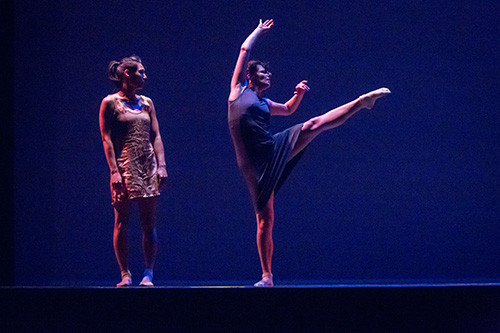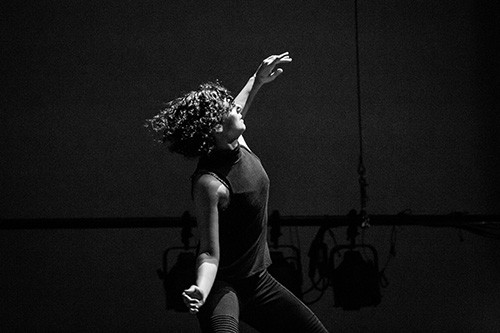In the vibrant world of movement and expression, contemporary dance stands out as a dynamic and evolving art form. To delve deeper into its essence, we interviewed Rachel Slater, one of the artistic directors of Muddy Feet Contemporary Dance based in Portland, Oregon. Through her insightful perspectives, we explore the multifaceted nature of contemporary dance, from its definition and training to funding challenges and future trajectories. This interview is part of our ongoing series exploring contemporary dance and its broader implications.
What is Contemporary Dance?
Defining contemporary dance can be elusive, especially for those unfamiliar with dance. Rachel Slater, who teaches dance at a public high school, often describes it as a dance form prioritizing expression. However, its visual manifestation is diverse. Contemporary dance embraces varied soundscapes, from pop and spoken word to classical music and even silence. Performance spaces range from traditional proscenium stages to unconventional warehouses, site-specific locations, and film settings. Choreographically, it encompasses a wide spectrum of approaches, emphasizing freedom and variety beyond traditional dance forms. Research and improvisation are frequently employed to generate movement vocabulary. In essence, contemporary dance is defined by its intention to be contemporary, constantly pushing boundaries and defying rigid definitions.
 Rachel Slater in a dance pose, expressive and dynamic
Rachel Slater in a dance pose, expressive and dynamic
Photo by Meghann Gilligan, capturing Rachel Slater’s dynamic movement in contemporary dance.
Training Pathways for Contemporary Dancers
For aspiring contemporary dancers, versatility is paramount. Slater recommends a strong foundation in ballet as a starting point, providing a versatile base to explore various dance forms. Ballet training offers a technique that dancers can either build upon or deviate from, making it a crucial initial step. Subsequently, she advises layering diverse techniques, including Trisha Brown, Doug Varone, release technique, Gaga, Countertechnique, and Forsythe improvisation modalities. Exposure to varied approaches—from classical shapes and steps to conceptual and task-based methods—equips dancers with adaptability, making them valuable to different choreographers. Diverse experiences also aid dancers in discovering their unique interests and artistic voices, encouraging them to consider their desired dance paths early on, acknowledging that these aspirations may evolve over time.
Contemporary Dance: Genre or Evolution?
Slater views contemporary dance as the latest evolution of modern dance. Modern dance emerged in the early 20th century as a rebellion against classical dance forms. Contemporary dance, in turn, can be seen as a response to postmodern dance. It seeks to integrate postmodernism’s conceptual and performance art explorations with expressiveness and technical rigor. Contemporary dance questions how to build upon postmodern concepts while retaining technical skill, training, and physicality. It’s an ongoing exploration of the human body’s potential and the boundaries of dance expression, constantly asking if there are still uncharted territories in movement.
Funding Models in Contemporary Dance
Funding remains a significant challenge in contemporary dance. The dance world is witnessing a rise in freelance artists as traditional company models become less sustainable due to funding limitations. Companies often face constraints in taking artistic and financial risks. For artists seeking to push boundaries, funding is often piecemeal, relying on foundational grants, donor bases, or supplementary income from other jobs. Slater notes geographical differences in funding realities. While European dancers may rely less on secondary jobs, dancers in the United States often need additional employment to support their artistic pursuits. Creative funding strategies are crucial, especially for emerging artists. In rapidly growing cities like Portland, Oregon, increased artistic activity intensifies competition for limited funding resources.
 Rachel Slater performing with focused intensity
Rachel Slater performing with focused intensity
Photo by Chris Peddecord, showcasing Rachel Slater’s intense focus and physicality in a contemporary dance performance.
Personal Contribution to Contemporary Dance
Slater’s choreographic contribution centers on valuing individual perspectives. She emphasizes collaboration with dancers, considering them active participants rather than blank slates. In her rehearsal process, improvisation, speaking, and writing are encouraged, fostering an environment where dancers’ unique voices contribute to the work. Slater aims to create relatable dance that transcends elitism and obscurity by focusing on personal narratives. Her piece Lorazepam, Sweaty Palms and the Shakes, inspired by her experiences with anxiety, resonated deeply with audiences, demonstrating dance’s capacity to connect with broader human experiences. Her choreographic interest lies in exploring human stories and dance’s relevance to everyday life, making contemporary dance accessible and meaningful to diverse audiences.
The Future Trajectory of Contemporary Dance
Technology is significantly shaping the future of contemporary dance. Long-distance collaborations facilitated by platforms like Skype and video sharing have become increasingly common. Technology influences both dance creation and performance, with video integration expanding creative possibilities. Contemporary dance currently navigates a tension between concept-driven, interdisciplinary work bordering on theater and performance art, and technically focused physicality. The field may evolve into distinct paths or find a middle ground, blending conceptual depth with technical prowess. The breadth of contemporary dance, encompassing both experimental performance art and technically refined styles, challenges conventional definitions, ultimately emphasizing the maker’s intention as the defining characteristic.
 Rachel Slater in a contemplative dance moment
Rachel Slater in a contemplative dance moment
Photo by Lindsay Hile, capturing Rachel Slater in a moment of contemplation and grace within the contemporary dance form.
Concluding Thoughts on Sustainability
The persistent issue of funding is crucial for the sustainability of contemporary dance. Muddy Feet Contemporary Dance constantly seeks innovative funding solutions to ensure stability, allowing for artistic focus rather than continuous financial concerns. Dance historically faces financial precarity, with dancers often undervalued despite their dedication. Slater advocates for greater agency for dancers and choreographers, addressing the imbalance where other collaborators are often prioritized financially. Achieving financial sustainability remains a critical challenge for the contemporary dance field, requiring ongoing efforts to ensure its artistic vitality and the fair compensation of its artists.


